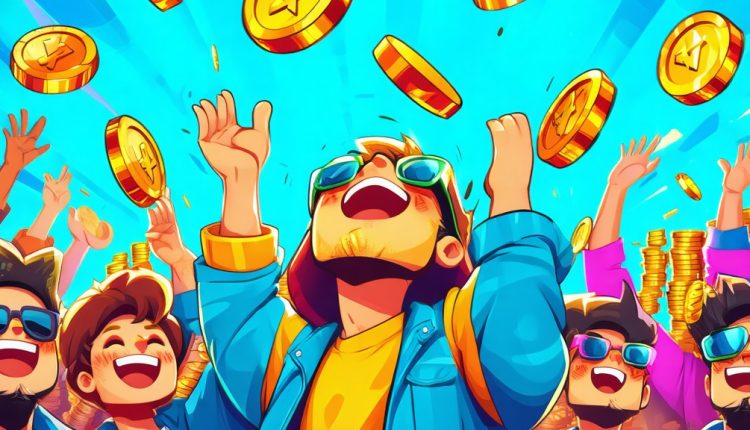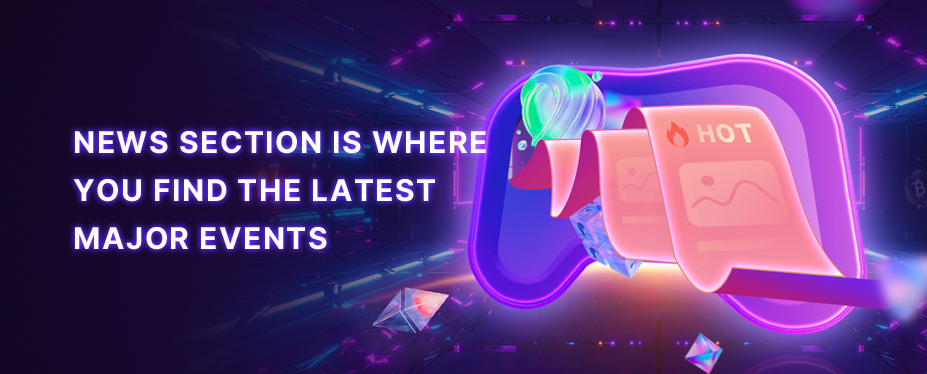Mavens: ¿llegarán los juegos a la criptomoneda?

Bienvenidos a la edición de febrero del grupo habitual de Mavens de BlockchainGamer.biz.
A menudo se ha predicho que los juegos web3 llevarán a la criptomoneda a la corriente dominante. Crees que esto sigue siendo así o que seguirá siendo una actividad de nicho para los entusiastas de las criptomonedas?
Robby Yung - Director General, Animoca Brands

ICreo que el gaming ha madurado hasta el punto de ocupar una gran parte del consumo de entretenimiento de las personas, y esto parece ser cierto independientemente de la geografía, la edad o el género. Por lo tanto, creo que es justo suponer que la misma proporción de la población general se aplicaría a las criptomonedas. Dicho esto, las personas en web3 son en su mayoría adoptadores tempranos de tecnología, por lo que creo que seguiremos viendo un porcentaje desproporcionadamente alto de la comunidad web3 involucrada en el gaming.
Esto nos lleva al tema de qué estamos definiendo realmente como gaming. En web2, hay géneros de juegos bien establecidos que han surgido como los grandes ecosistemas, como los endless runners, los juegos de puzzles, los shooters en primera persona, los MMO/RPGs, etc. En web3, el panorama se vuelve más complejo, ya que hay una variedad de actividades gamificadas habilitadas por mecanismos de tokens que no consideraríamos juegos tradicionales. Por ejemplo, la "token farming" (cultivo de tokens), diría yo, es un juego muy popular. Si estás intercambiando NFTs en Blur para obtener recompensas en tokens, eso es realmente una forma de juego única de web3.
Intercambiar NFTs en Blur para obtener recompensas en tokens es, en esencia, un tipo de juego exclusivo de web3.
Dicho esto, volviendo a la pregunta original, mi respuesta es un sí rotundo: creo que el gaming definitivamente será un catalizador clave para la adopción masiva de web3.
Mike Levine – Fundador, Mystic Moose
El gaming en web3 aún tiene el potencial de llevar las criptomonedas al público general, pero esto no sucederá únicamente a través de modelos impulsados por la especulación; debe ofrecer un valor real de jugabilidad más allá de los incentivos en tokens.
El cambio clave que estamos viendo es el auge de las economías impulsadas por los jugadores, donde la propiedad, las experiencias basadas en IA y los activos dentro del juego realmente mejoran la jugabilidad en lugar de servir solo como instrumentos financieros.
Aplicaciones como nuestro nuevo World Wide Agents, que integra Agentes de IA, recompensas on-chain e interacciones impulsadas por los jugadores, demuestran que web3 puede crear experiencias de juego completamente nuevas en lugar de simplemente versiones financiadas de juegos existentes.
Si los proyectos se enfocan en mecánicas centradas en la diversión, economías escalables y una incorporación sin fricciones, el gaming en web3 puede, sin duda, impulsar la próxima ola de adopción masiva.
Tony Pearce – Co-founder, Reality+

I’ve always believed that gaming will be the key driver in bringing crypto to the mainstream. After all, games have used virtual currencies for years – integrating crypto is simply the next evolution.
While web3 gaming is still a niche market, it’s growing rapidly and has the potential to expand significantly. However, its success depends on moving beyond speculation-driven models. If blockchain elements become an organic part of high-quality games – rather than the primary selling point – web3 gaming could onboard millions into the world of crypto.
Robbie Ferguson – Co-founder and president, Immutable
It’s no longer our prediction that web3 gaming will take crypto mainstream – it’s already happening. There’s three key indicators of this:
- First, over half of the largest gaming companies are now investing in web3, either developing games or hiring blockchain positions.
- Second, major Asian gaming companies like Netmarble are bringing their proven IP onchain.
- Third, we’ve seen unprecedented game migrations to optimized chains as developers prioritize player experience over tokenomics.
With Immutable Passport reaching 4.6 million signups, we’re now moving beyond the crypto-enthusiast audience. The key has been focusing on great gameplay first, abstracting away the blockchain elements and treating web3 as an enabler rather than a feature. When players can seamlessly access AAA-quality games – without needing to understand the underlying tech – that’s when adoption becomes inevitable.
The question isn’t whether web3 gaming will go mainstream – it’s now just a matter of how quickly. The infrastructure, partnerships, and games are already here. Now it’s about execution.
Sam Barberie – Head of strategy and partnerships, Horizon Blockchain Games

This answer depends on what we mean by taking crypto mainstream. Games can onboard users quickly, but other use cases will also be required to retain users. In 2024, gaming overtook all other verticals in wallets according to SVB, so it’s fair to say that gaming is already the category bringing web3 to the most consumers. (Whether that’s from live games, game IP collections and tokens, or something else is another question.) Gaming is a hits-driven business, which means that at any point a single viral title could double, triple, quadruple the number of web3 wallets rapidly. As of now, that’s most likely to come from a surprise web3-native success as opposed to a GTA VI, and history hasn’t yet demonstrated massive web3 games with sustained audiences.
But while a game can onboard many users quickly, unless the game retains players, or those players find other use cases for their blockchain assets and spending power, they’ll bounce.
Banks and other financial institutions are increasingly looking at crypto for its benefits over traditional financial rails for cross-border payments, faster settlements, and more. A large bank, like JPM Chase, could enable web3 for 82 million customers pretty quickly. People don’t use their bank every day like they might play a game daily, but people need their banks regularly, while game affinity comes and goes.
Games are and will continue to be key entry points for consumers to web3, but it will require not only a robust portfolio of many high-quality, retained games, but also broader consumer use cases to truly make it part of the daily life of most people.
David Bolger – Gaming and consumer lead, Offchain Labs
While the general community sentiment of web3 gaming is currently low, the opportunity is clear when we take a broader look at the technology and application. To the tune of about $100 billion annually, gamers are the largest consumers of digital assets. Blockchains provide the best environment for digital assets to live on, even if it isn’t immediately evident. I firmly believe that the gaming industry will be meaningfully leveraged in its development in the near future.
A broader integration of blockchains into mainstream gaming will happen naturally over time, focusing on practical benefits over speculation. Borderless payments, provably fair outcomes and community governance are just a few of the benefits that are likely to drive more onchain engagement. While speculation in blockchain gaming isn’t inherently negative, it currently overshadows the more meaningful aspects of this technology. In 2025, our industry should strive to prioritize this evolution in gaming.
Alexander Goldybin – Cofundador y presidente, Immutable

La creencia de que los juegos web3 llevarán las criptomonedas al público masivo siempre ha sido más una narrativa que una realidad. Si observamos los datos, los jugadores tradicionales han mostrado resistencia a las mecánicas basadas en blockchain, y los principales estudios de videojuegos han retrocedido en sus experimentos con web3 debido a la tibia recepción. La idea de que la gente adoptará las criptomonedas en masa solo porque están integradas en los juegos es errónea.
En realidad, la adopción masiva ocurrirá cuando los jugadores interactúen con juegos basados en blockchain sin siquiera darse cuenta. En este momento, los juegos web3 suelen priorizar la tecnología sobre la experiencia, esperando que los usuarios naveguen por billeteras complejas, tarifas de gas y economías de tokens. Hasta que estas barreras sean invisibles, los juegos web3 seguirán siendo un nicho en lugar de un disruptor del mercado masivo.
Dicho esto, hay señales prometedoras en ciertas áreas. Por ejemplo, la integración a través de plataformas masivas como Telegram proporciona un punto de entrada accesible, especialmente para juegos más pequeños. Por otro lado, en el caso de los juegos a gran escala, personalmente espero avances significativos provenientes de Asia, particularmente de Corea del Sur y Japón. Estos mercados tienen un historial comprobado de innovación en videojuegos y un alto nivel de aceptación hacia nuevas tecnologías.
En iLogos, vemos blockchain como una herramienta, no como un argumento de venta. Si la industria sigue persiguiendo el hype especulativo en lugar de construir juegos realmente atractivos y sin fricciones, el gaming web3 corre el riesgo de quedarse atrapado en una burbuja de entusiastas de las criptomonedas. Sin embargo, con las innovaciones adecuadas, el gaming web3 tiene el potencial de salir de su nicho y redefinir la forma en que pensamos sobre las experiencias digitales.
Christina Macedo – Fundadora y CEO, PLAY Network
Tomemos un paso atrás y preguntémonos: ¿POR QUÉ el gaming onchain? Porque permite a los jugadores acceder a más juegos en más plataformas, gestionar activos de manera más eficiente con stablecoins y poseer realmente lo que ganan.
¿CÓMO llegará al público masivo? El gaming llevará las criptomonedas al mainstream al 100 %, pero no de la forma en que la gente lo imagina. En PLAY, no les pedimos a los jugadores que se preocupen por billeteras o blockchains. Nos encontramos con ellos donde ya están: App Store, Play Store, Telegram, Discord. Los JUGADORES simplemente juegan, la tecnología funciona en segundo plano. Los jugadores ganan tokens, poseen activos, comercian, pero ni siquiera se dan cuenta de que es cripto, y ahí está la magia.
La IA lo lleva al siguiente nivel. Con DEFAI, los agentes de IA se convierten en la interfaz de usuario para integrar a los jugadores en el mundo cripto. Con el gaming onchain, puedes tener un agente de IA manejando todo lo relacionado con blockchain por ti. Ya hay 3 mil millones de personas jugando. Lleva esos juegos onchain, en cualquier plataforma, y los jugadores seguirán.
Ben James – Founder of 404 and Atlas

The idea that web3 gaming will drive mass crypto adoption has been around for years, but the focus should be on the player experience rather than the technology. Players engage with games because they are immersive, rewarding, and well-designed – whether or not blockchain is involved.
Web3 technology offers real advantages, such as asset ownership and player-driven economies, but its adoption will remain slow if the user experience is complicated or requires technical knowledge. The challenge is not convincing players to adopt crypto but integrating blockchain in a way that enhances the game without disrupting it.
The projects that succeed will be those that create meaningful and engaging experiences where blockchain adds value without being the focus. Until that happens, web3 gaming will remain an interesting but niche segment rather than a force that reshapes the industry overnight.
Sicco Naets – Head of ecosystem dev, Moonbeam Foundation
For years, web3 gaming has been touted as the gateway to mainstream crypto adoption. And there is some evidence to support this: it has consistently outperformed other crypto applications in terms of on-chain activity, showing significant potential for broader adoption. However, the reality is more complex. While web3 gaming has attracted engagement, its success has primarily been fueled by financial incentives rather than innovative gaming experiences. This reliance on monetization has created significant roadblocks to mainstream adoption.
For web3 gaming to truly break into the mainstream, it must offer something fundamentally new—an experience that web2 gaming cannot replicate. I do think there are several potential compelling avenues web3 gaming should explore.
1. Competition Over Meaningful Digital Assets
Games like EVE Online have demonstrated how the destruction or capture of valuable in-game assets can create stories that capture the imagination of players worldwide. In January 2014, the battle of B-R5RB (a.k.a. The Bloodbath of B-R5RB) involved over 7,500 players and resulted in the destruction of 576 capital ships collectively estimated at 330K USD. This wasn’t just covered by gaming outlets, it even made mainstream news and brought a flock of new players to Eve Online. Or take the Guiding Hand Social Club assassination: a Corp (Eve’s version of a guild) spent more than 10 months infiltrating a rival player-run association called “Ubiqua Seraph”, which ended in the assassination of their CEO, the capture of all their assets and the ultimate collapse of Ubiqua Serapth.
Web3 is uniquely placed to take advantage of this quirk of gamer psychology: gaming assets can be instantly converted to real world value and the burning or transfer of those assets makes it clear who came out on top in an in-game struggle. So rather than thinking of crypto assets as a source of income, think of it as the stakes you’re willing to put up for a battle – “How confident are you in your gaming abilities? Are you willing to put your money where your mouth is?” Because the rewards are more than just financial – they’re bragging rights that actually mean something to people: “I blew up a 17K ship that it took that player 10 months to build” says a lot more than “I got an achievement badge.”
2. Governance Over Game Worlds
One of the most persistent problems in gaming is the disconnect between developers and players. Time and time again, major studios have miscalculated community sentiment, leading to significant backlash. Games like World of Warcraft, Diablo Immortal, and Battlefield 2042 have all suffered from unpopular updates, monetization schemes, or poor design choices, resulting in mass player revolts.
A lot of this stems from a desire to tightly control the player experience – when you play a game like World of Warcraft, it’s a bit like going for a ride in an amusement park. It may look glitzy and have its thrills, but it doesn’t take very long for you to realize the entire experience is on rails – you’re screaming at the exact same points every other visitor screamed at, and you’re ooh-ing and aah-ing at the same sights.
Mainstream gamers crave more authentic experiences than that – that is why in so many games people trying to either “break the ruleset” or even just try to be “first” to kill a specific boss – like a Mount Everest climber, they want to know they’re not trotting in someone else’s footsteps – they’re first to the summit.
There is a huge potential in giving players a more meaningful seat at the table. This could be expressed in a number of different ways – it could be governance over aspects of the game ruleset, it could be deciding what the next expansion might be, it could a form of meta-gaming (imagine players setting digital taxation in-game or having a community vote on a “Casus Belli”).
Leo Li – Director de crecimiento, CARV

Sí, aunque puede que no se parezca a la "cripto" que conocemos. Si hemos aprendido algo del éxito arrollador de Off The Grid o los mini-juegos de Telegram, es que los desarrolladores están volviendo a centrarse en la jugabilidad y utilizando la cadena de bloques como un valor añadido que mejora el comercio, la propiedad y la expresión. Esto facilita el acceso a los jugadores casuales y pone el foco en la diversión en lugar de limitarse a la funcionalidad cripto.
Este enfoque de "blockchain en segundo plano" está funcionando. Más del 75 % de los juegos basados en blockchain lanzados desde 2018 han sido descontinuados, en parte porque priorizaban las funciones cripto en lugar de ofrecer una jugabilidad atractiva. Los proyectos exitosos están revirtiendo este enfoque: comienzan con juegos de calidad y utilizan la blockchain para mejorar la experiencia, no para definirla. Esto incluye una verdadera propiedad de los objetos dentro del juego, sistemas de intercambio fluidos y skins de personajes que pueden utilizarse en distintos universos.
Aunque siempre parece que el “momento mainstream” de los juegos web3 está a la vuelta de la esquina, estos casos de uso recientes están finalmente llevándonos al siguiente nivel.
Quinn Kwon – Jefe de estrategia web3, Delabs Games
Muchos predicen que los juegos web3 serán una fuerza impulsora para llevar las criptomonedas al público general, pero esa visión depende de capturar la esencia fundamental del gaming: crear experiencias que sean divertidas y que ofrezcan recompensas significativas (monedas).
Hasta ahora, muchos juegos web3, como Hamster Combat, se han basado en mecánicas de tipo clicker. Sin embargo, creemos que el futuro de los juegos web3 estará marcado por el auge de los juegos de tipo mid-core. A diferencia de los modelos simples basados en recompensas, los juegos mid-core priorizan una jugabilidad envolvente junto con incentivos financieros.
En Delabs Games valoramos los juegos web3 no solo por las recompensas económicas, sino por la diversión que generan. Nuestro nuevo lanzamiento, Boxing Star X, apuesta por esta idea, demostrando cómo los gráficos mejorados, la acción dinámica y la energía de los juegos deportivos pueden crear experiencias profundamente inmersivas. Este enfoque refleja nuestra visión más amplia para los juegos web3: un futuro en el que la jugabilidad inmersiva y gratificante sea el eje central.
Si los juegos web3 continúan evolucionando más allá de estructuras de recompensa simplistas y ofrecen experiencias que realmente cautiven a los jugadores, el potencial para trascender el nicho de los entusiastas cripto y atraer a una audiencia más amplia será enorme. Así es como vemos a los juegos web3 actuando como un catalizador que impulsa las criptomonedas al público general.




